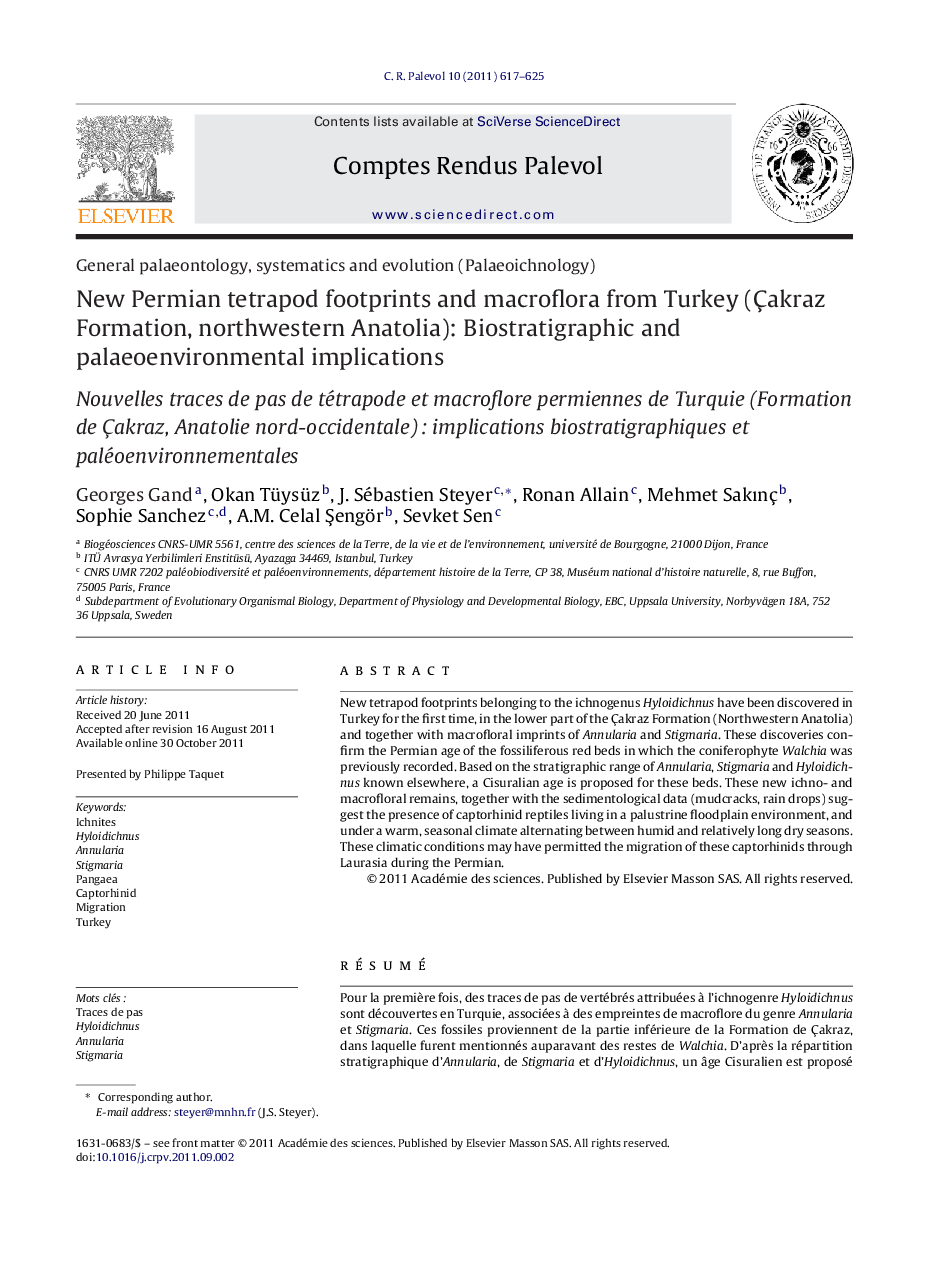| کد مقاله | کد نشریه | سال انتشار | مقاله انگلیسی | نسخه تمام متن |
|---|---|---|---|---|
| 4745926 | 1642008 | 2011 | 9 صفحه PDF | دانلود رایگان |

New tetrapod footprints belonging to the ichnogenus Hyloidichnus have been discovered in Turkey for the first time, in the lower part of the Çakraz Formation (Northwestern Anatolia) and together with macrofloral imprints of Annularia and Stigmaria. These discoveries confirm the Permian age of the fossiliferous red beds in which the coniferophyte Walchia was previously recorded. Based on the stratigraphic range of Annularia, Stigmaria and Hyloidichnus known elsewhere, a Cisuralian age is proposed for these beds. These new ichno- and macrofloral remains, together with the sedimentological data (mudcracks, rain drops) suggest the presence of captorhinid reptiles living in a palustrine floodplain environment, and under a warm, seasonal climate alternating between humid and relatively long dry seasons. These climatic conditions may have permitted the migration of these captorhinids through Laurasia during the Permian.
RésuméPour la première fois, des traces de pas de vertébrés attribuées à l’ichnogenre Hyloidichnus sont découvertes en Turquie, associées à des empreintes de macroflore du genre Annularia et Stigmaria. Ces fossiles proviennent de la partie inférieure de la Formation de Çakraz, dans laquelle furent mentionnés auparavant des restes de Walchia. D’après la répartition stratigraphique d’Annularia, de Stigmaria et d’Hyloidichnus, un âge Cisuralien est proposé pour ces niveaux. Cet assemblage ichno- et paléobotanique, combiné aux données sédimentologiques (fentes de dessiccation, gouttes de pluie) suggère la présence de reptiles captorhinidés évoluant dans un environnement de plaine d’inondation à zones palustres et végétalisées, sous climat chaud et saisonnier avec des alternances de périodes humides et sèches. Ces conditions climatiques ont peut-être favorisé la migration trans-laurasiatique de ces reptiles au cours du Permien.
Journal: Comptes Rendus Palevol - Volume 10, Issue 8, November 2011, Pages 617–625